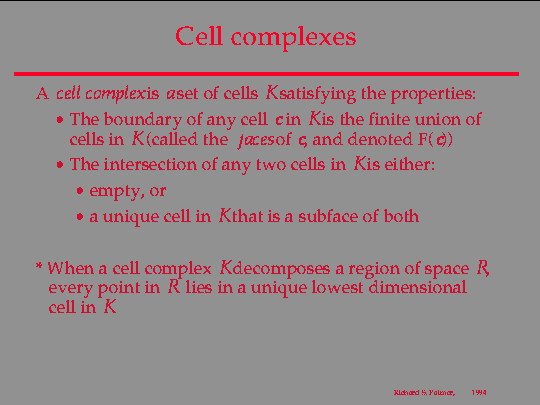
A cell complex is a set of cells K satisfying the properties:The boundary of any cell c in K is the finite union of cells in K (called the faces of c, and denoted F(c))The intersection of any two cells in K is either empty, or a unique cell in K that is a subface of both* When a cell complex K decomposes a region of space R, every point in R lies in a unique lowest dimensional cell in K. A cell captures the notion of a simple part of a complex system. For instance, a cell could be used to represent a simple part of a complex shape. We will also see how a cell can be used to represent a single component of an electrical circuit. The cell complex is the mathematical object used to represent a complex system that has been partitioned into simple subsystems (cells). Cell complexes are sets of cells that satisfy additional properties that are used in defining algebraic-topological operations. The requirements are that 1) the boundary of any cell in the complex is represented by a finite set of cells that are also in the complex, and 2) that the intersection of any two cells c1 and c2 in the complex is a unique cell, which is also in the complex, and which is a subface of both c1 and c2. (A subface is an element of the transitive closure of the face relation, that is, the subfaces of c are c, the faces of c, the faces of the faces of c, etc. )These conditions guarantee, among other things, that there is a well defined mathematical object with which to associate the interaction between any two interacting cells in the complex. In addition, if the cell complex partitions a region of space, we are assured that every point in the space may be associated with a unique lowest dimensional cell.